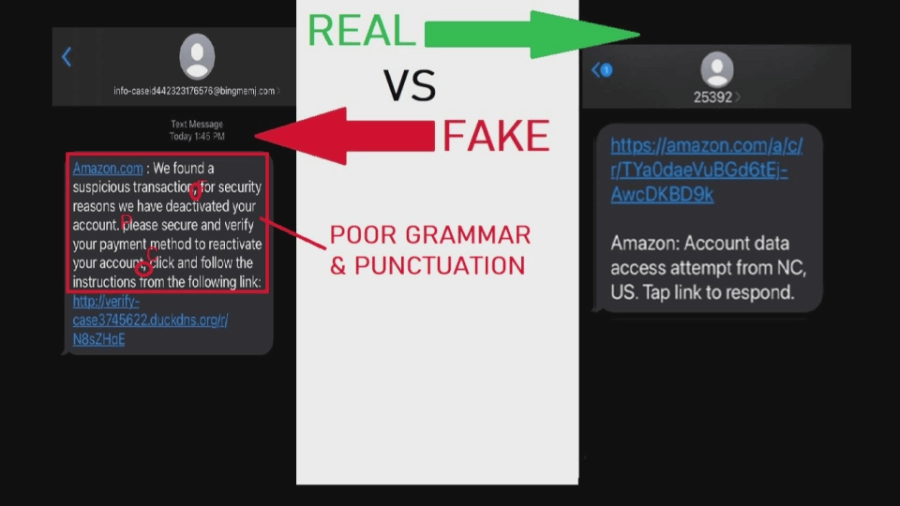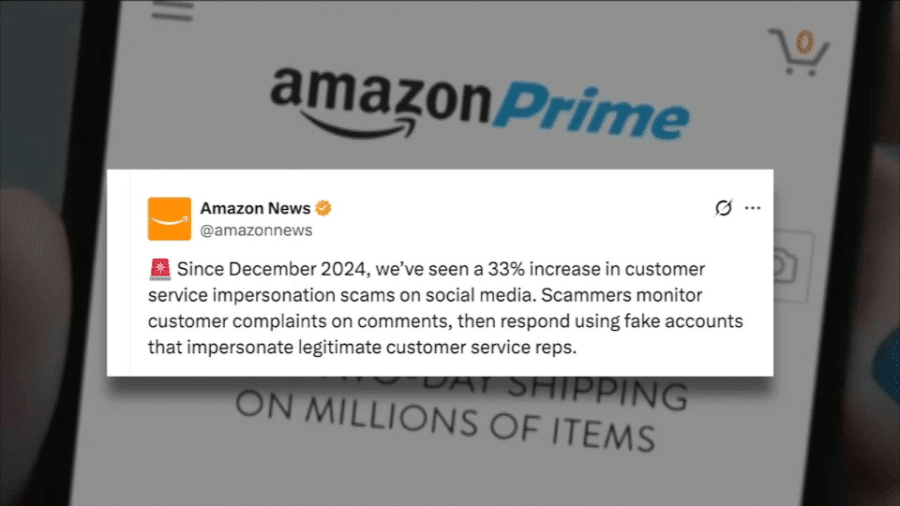📑 Table of Contents
A new wave of scam text messages is sweeping across the United States, and this time, cybercriminals are pretending to be trusted brands like Amazon and UPS. These fraudulent texts are part of a growing trend known as smishing—short for SMS phishing—where scammers use text messages to trick people into revealing personal or financial information.
A Surge in Sophisticated Scams
Unlike the obvious spam messages of the past, today’s scam texts look almost identical to legitimate delivery or account notifications. They use real logos, professional wording, and even official-looking links to fool recipients.
These messages typically claim that a package couldn’t be delivered, that an account has been locked, or that a payment is overdue. Victims are then urged to click a link to “resolve” the issue. That link leads to a fake website designed to steal login credentials, credit card details, or other private information.
Some of these sites also attempt to install malware on the user’s device, giving criminals access to stored passwords, photos, or banking apps. What’s even more concerning is that these attacks are becoming more targeted—using personal details from past data leaks to make messages seem legitimate.
The Rise of “Wrong Number” Text Cons
Another version of this scam doesn’t rely on fear—it relies on friendliness. Known as “wrong number” scams, these texts start with innocent messages like, “Hey, is this Sarah?” or “Sorry, wrong person!”
At first, the exchange seems harmless. But if the recipient replies, the scammer slowly builds a friendly conversation before steering it toward investment scams, romance fraud, or phishing links. Because the approach feels personal and low-pressure, it often succeeds where traditional scams fail.
Where Scammers Get Your Number
Many victims wonder how these fraudsters got their contact information. The truth is, your phone number is likely more public than you realize.
Numbers are often collected from data breaches, hacked databases, online sign-ups, public websites, or mobile apps that sell data to third parties. Some scammers even use automated smishing tools that generate and text thousands of random numbers until someone responds.
Once a scammer has a list, they can spoof sender IDs, making their texts appear to come from “Amazon,” “UPS,” or even your bank. This trick makes fraudulent messages much harder to spot.
How to Protect Yourself from Text Message Scams
Experts recommend several simple but effective ways to protect against these evolving text scams.
- Never click on unexpected links. If you receive a delivery notice or account alert, visit the official website or app directly instead.
- Be skeptical of urgency. Scammers want you to act fast and think later. Phrases like “act now,” “final notice,” or “your account is suspended” are classic warning signs.
- Ignore unfamiliar numbers. If you get a casual “wrong number” text, don’t reply—just delete it.
- Use two-factor authentication (2FA). Adding this layer of security helps protect your accounts even if your password is stolen.
- Report suspicious messages. Forward scam texts to 7726 (SPAM) or report them to your carrier and the Federal Trade Commission (FTC).
- Keep your phone updated. Regular system updates often patch vulnerabilities that scammers exploit.
- Educate family members. Older adults are frequent targets of text scams, so share safety tips with them.
If you suspect a message is fake, pause and verify before doing anything. Legitimate companies like Amazon or UPS will never text you asking for passwords, payment details, or Social Security numbers.
Why Text Scams Keep Growing
Smishing has exploded because it’s cheap, fast, and effective. Text messages have an open rate of over 95%, which means nearly everyone sees them. Criminals know that a single click from just a few victims can make these campaigns highly profitable.
New AI tools are also helping scammers create more believable messages, complete with proper grammar and personalization. This automation allows criminals to run large-scale campaigns that look almost indistinguishable from genuine business texts.
How Businesses Can Help Stop the Problem
Scams like these don’t just harm individuals—they damage the reputation of legitimate companies whose names are being misused. Businesses can help by sending messages only from verified numbers, following SMS compliance rules, and using registered sender IDs under frameworks like 10DLC.
Strong verification standards make it easier for phone carriers and consumers to distinguish real messages from fake ones. In addition, companies should educate their customers about how to verify official texts and where to report impostors.

Staying Safe in the Age of Smishing
The takeaway is simple: always be cautious when receiving unexpected texts, even if they appear to come from a familiar name.
Scammers are evolving, but so can your defenses. By slowing down, verifying messages, and protecting your data, you can avoid becoming the next victim. In today’s digital world, vigilance isn’t optional—it’s essential.
